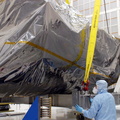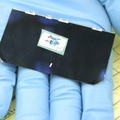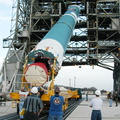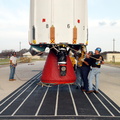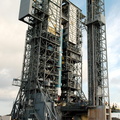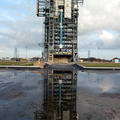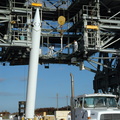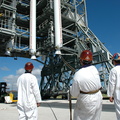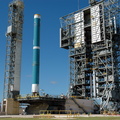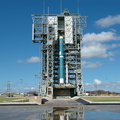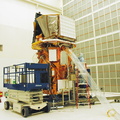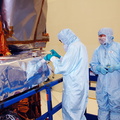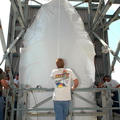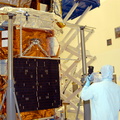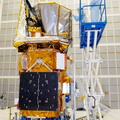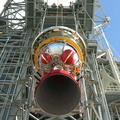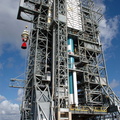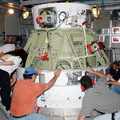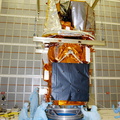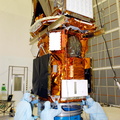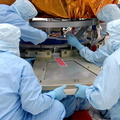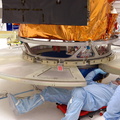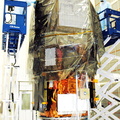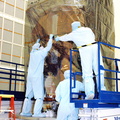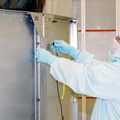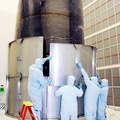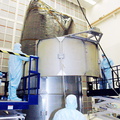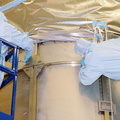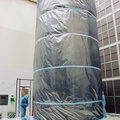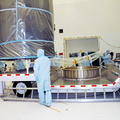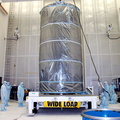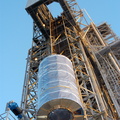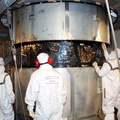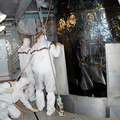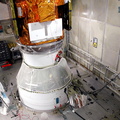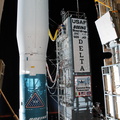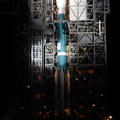
WIKIARCHIVES.SPACE
The Human Spaceflight Archive

Information
- Taken in
- Kennedy Space Center
- Author
- NASA
- Description
- Spectrum Astro Inc. technicians in Hangar AE at Cape Canaveral Air Force Station (CCAFS) in Florida lower the protective cover over the Swift spacecraft before moving it to the launch pad. The launch of the Swift observatory, a NASA spacecraft to pinpoint the location of gamma-ray bursts, is scheduled for Nov. 17 from Pad 17-A on CCAFS. Liftoff aboard a Boeing Delta II rocket is targeted at the opening of a one-hour launch window beginning at 12:09 p.m. EST. Gamma-ray bursts are distant, yet fleeting explosions that appear to signal the births of black holes. They are the most powerful explosions known in the universe, emitting more than 100 billion times the energy that the Sun emits in a year. Yet they last only from a few milliseconds to a few minutes, never to appear in the same spot again.
- Created on
- Saturday 6 November 2004
- Albums
-
Locations / OSM-4.915832801313164
US SPACE PROGRAM / SATELLITES / DELTA II / SWIFT / Rocket preparation
- Source link
- https://science.ksc.nasa.gov/gallery/photos/2004/captions/
- Visits
- 31
- Rating score
- no rate
- Rate this photo
- License
- CC BY-NC-ND
- Modified by WikiArchives
- No (original)
- Downloads
- 0
Powered by Piwigo







